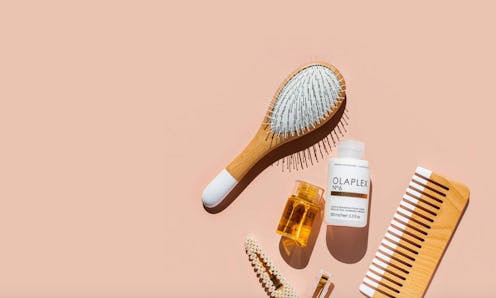Beauty
How To Use Olaplex For The Shiniest, Healthiest Hair
Including their new No. 0 Treatment, which like the rest of the range, also smells amazing.

Olaplex is a brand that has allowed hairstylists to live out their wildest dreams when it comes to colouring their clients' hair. The ground-breaking products from Olaplex work to repair disulphide bonds in hair, which can become damaged by harsh colouring (like bleach), as well as excess heat. The line has eight products in total, and is popular both in salons and at home. Here's how to use Olaplex for best results.
What is Olaplex?
It's worth pointing out that Olaplex as a 'system' is designed to restore broken bonds in the hair, which in turn makes hair smoother, stronger, silkier, and more resilient. The brand started out in salons, and two of their products are still strictly for professional use only. However, there are now six at-home formulas that can be used by everyone, including their original treatment and some newer styling heroes. All products contain Olaplex's patented molecule, bis-aminopropyl diglycol dimaleate, which works to repair disulphide bonds in hair, which are partly responsible for that healthy look and feel we're all after.
What is Olaplex No. 0?
The latest addition to the line is the No. 0 Intensive Bond Building Treatment Kit, which has been formulated to intensify the effects of the original No. 3 treatment. It helps to prep hair for nourishment, and works to strengthen and protect locks as a first step.
No. 0 is promisingly inspired by professional products, and contains the highest concentration of that impressive patented molecule we mentioned above. You should apply No. 0 on wet hair, leave it for 10 minutes, then add your No. 3 treatment on top.
To learn more about how to use No. 0 and the other products in the Olaplex range, keep scrolling.
We only include products that have been independently selected by Bustle's editorial team. However, we may receive a portion of sales if you purchase a product through a link in this article.
This article was originally published on